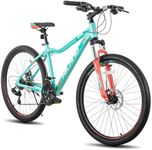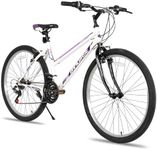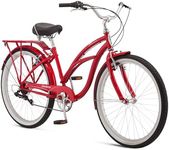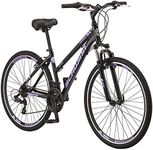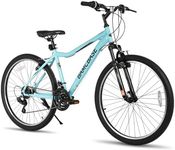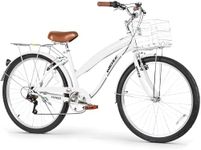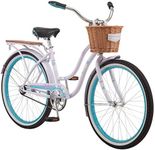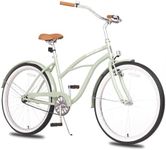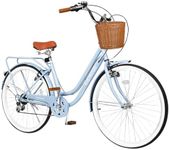Buying Guide for the Best Bicycles For Women
Choosing the right bicycle can greatly enhance your riding experience, whether you're commuting, exercising, or just enjoying a leisurely ride. When selecting a bicycle, it's important to consider various factors that will affect comfort, performance, and suitability for your intended use. Here are some key specifications to help you make an informed decision.Frame SizeThe frame size of a bicycle is crucial for comfort and efficiency. It refers to the length of the seat tube and is usually measured in inches or centimeters. A properly sized frame ensures that you can ride comfortably without straining your back or knees. To find the right frame size, consider your height and inseam length. Women-specific bikes often have frames designed to accommodate shorter torsos and longer legs, providing a better fit.
Frame MaterialThe material of the bicycle frame affects its weight, durability, and ride quality. Common materials include aluminum, steel, carbon fiber, and titanium. Aluminum is lightweight and affordable, making it a popular choice for many riders. Steel is heavier but offers a smooth ride and is very durable. Carbon fiber is light and strong, providing excellent performance but at a higher cost. Titanium is also lightweight and durable but is typically more expensive. Choose a frame material based on your riding style and preferences.
Handlebar TypeHandlebars come in various shapes and sizes, influencing your riding posture and comfort. Flat handlebars are common on mountain and hybrid bikes, offering an upright riding position that is comfortable for casual rides and commutes. Drop handlebars are found on road bikes and provide multiple hand positions, allowing for a more aerodynamic posture and better performance on long rides. Consider the type of riding you'll be doing to select the most suitable handlebar type.
SaddleThe saddle, or seat, is a key component for comfort. Women's saddles are often wider and shorter to accommodate the female anatomy. Look for a saddle with adequate padding and a shape that supports your sit bones. Some saddles also have cutouts to relieve pressure on sensitive areas. Test different saddles to find one that feels comfortable for your riding style and duration.
GearingGearing determines how easy or hard it is to pedal the bike. Bikes can have a single gear or multiple gears, with some models offering up to 30 or more. More gears provide a wider range of options for tackling different terrains, such as hills or flat roads. If you plan to ride in varied terrain, a bike with multiple gears will be beneficial. For flat, urban riding, fewer gears may suffice.
BrakesBrakes are essential for safety and control. There are two main types: rim brakes and disc brakes. Rim brakes are lighter and more affordable but can be less effective in wet conditions. Disc brakes offer better stopping power and performance in all weather conditions, making them a good choice for mountain biking or commuting in rainy areas. Consider the type of riding and weather conditions you'll encounter when choosing brakes.
Wheel SizeWheel size affects the bike's handling and performance. Common sizes include 26-inch, 27.5-inch, and 29-inch for mountain bikes, and 700c for road and hybrid bikes. Smaller wheels are more agile and easier to maneuver, while larger wheels roll over obstacles more smoothly and maintain speed better. Choose a wheel size that matches your riding style and the type of terrain you'll be riding on.
SuspensionSuspension systems absorb shocks from rough terrain, providing a smoother ride. Bikes can have front suspension (hardtail), full suspension, or no suspension (rigid). Front suspension is common on mountain bikes and is suitable for light off-road riding. Full suspension offers more comfort and control on rough trails but adds weight and complexity. Rigid bikes are lighter and more efficient on smooth surfaces. Consider the type of terrain you'll be riding on to decide if you need suspension and what type.


